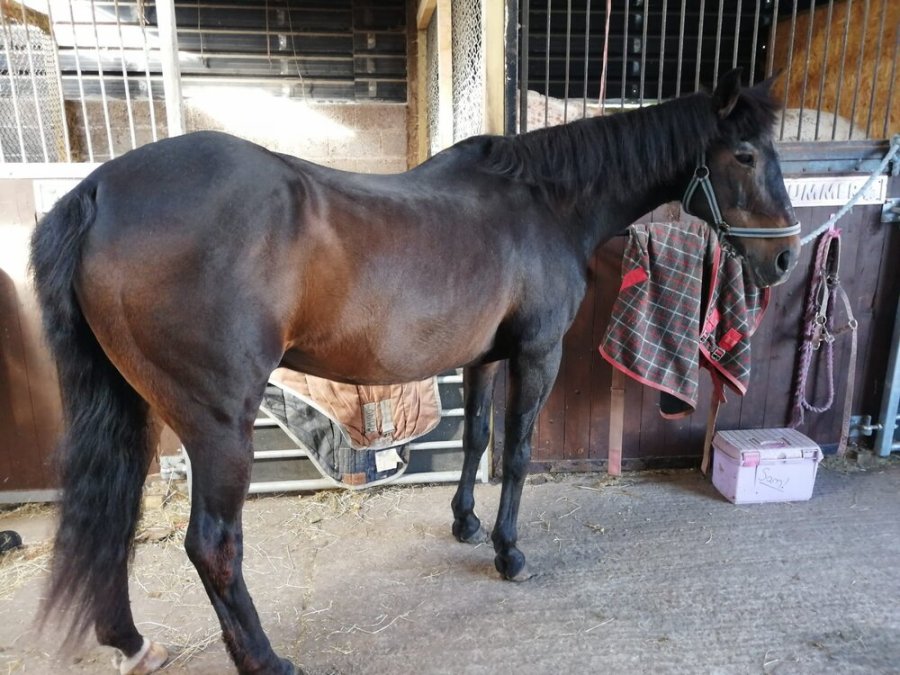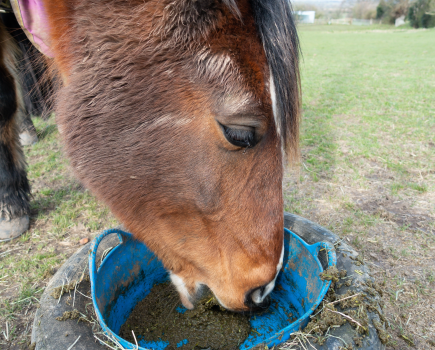Rhett, a 29-year-old mountain & moorland x Thoroughbred, lives in North Yorkshire with his owner Sam Colman. Last winter an otherwise fit and happy Rhett began to face some dietary and digestive challenges, losing much more weight than Sam was happy with.
Having found no clinical issues, Sam’s vet advised her to address this with appropriate dietary changes. Jasmin Grogan, nutrition advisor with Baileys Horse Feeds advises Sam about how to help Rhett retain water in winter and prevent loose droppings.
When a horse suffers from loose droppings and/or excess faecal water, it can be a real pain and uncomfortable for both horse and owner, particularly during winter when it’s cold and you don’t want to be washing him off in icy water.
So, we need to get to the root of the problem and try to resolve it as quickly as possible.
There are a number of reasons why horses might develop loose droppings or excess faecal water. These include:
- An increase in the water content of the diet. Water is normally reabsorbed in the large intestine, but if this mechanism isn’t working effectively, or there’s too much water in the diet for the system to cope, this can result in loose droppings.
- Intake of lush pasture.
- Lack of quality digestible fibre.
- Poor dentition or an inability to effectively chew fibres.
- Viral or bacterial infections.
- Changes to the hindgut environment, such as a drop in pH, increasing acidity.
- Disruption of the gut microbiome.
- Sudden dietary changes.
Narrowing it down
As Rhett’s issue is occurring when he’s stabled on forage, not when he’s turned out over the summer, we can dismiss large intake of pasture as a cause.
However, it’s vitally important to ensure that Rhett is receiving sufficient fibre when he’s stabled.
At pasture horses have constant access to fibre, but when stabled hay/haylage rations inevitably get eaten up in the first part of the night and they then have nothing left to trickle through the gut.
Bearing in mind Rhett’s age, I feel we need to focus our investigation on his intake of digestible fibre and dentition.
If you’re using haylage as the main forage source, it’s important to remember that it needs to be fed in larger quantities due to its higher moisture content — this could even be contributing to Rhett’s issue.
In addition, haylage is more fermentable, which can affect pH levels. A dry hay would therefore be preferable.
Whatever the type of forage, it should be fed at a minimum of 1.5% of a horse’s bodyweight, but ideally ad lib (ie, providing as much as they want to eat — although within reason if you have a particularly good doer).
Other questions to consider are:
- Are Rhett’s teeth still in good working order? Can he effectively grasp and chew his forage for pre-digestion, or is he quidding?
- Is he eating enough when stabled (ie, constantly having a nibble at his hay), or does he stand around a lot of the time?
- How would you describe the quality of your forage? Is it soft to the touch, or more coarse and stalky? Is it a dull yellow colour, or greener with some leaf visible?
Feeding forage replacements
If it turns out that Rhett isn’t managing to eat sufficient amounts of forage, then a forage replacement — for example chaff, unmolassed sugar beet and fibre nuggets — is likely to be the answer.
This should be fed in a way that mimics natural grazing behaviour, so offer it in several separate buckets and treat balls rather than a large pile or a single bucket.
If possible, divide his nightly rations into two sittings — give him one batch before you do all of your chores, then top it up again before you leave.
Quality counts
If, on assessment of your forage, you find that it seems old, coarse in texture, or of poor quality, I would recommend sourcing a softer, earlier-cut version.
In any scenario the use of a probiotic or prebiotic supplement is also likely to be beneficial, with a probiotic providing ‘live’ healthy bacteria to the gut, and a prebiotic then providing a food source to these ‘good bacteria’ to help them flourish and repopulate the digestive system at the expense of harmful bacteria.
Don’t miss the latest issue of Your Horse Magazine, jam-packed with training and veterinary advice, horse-care tips and the latest equestrian products available on shop shelves, on sale now.









